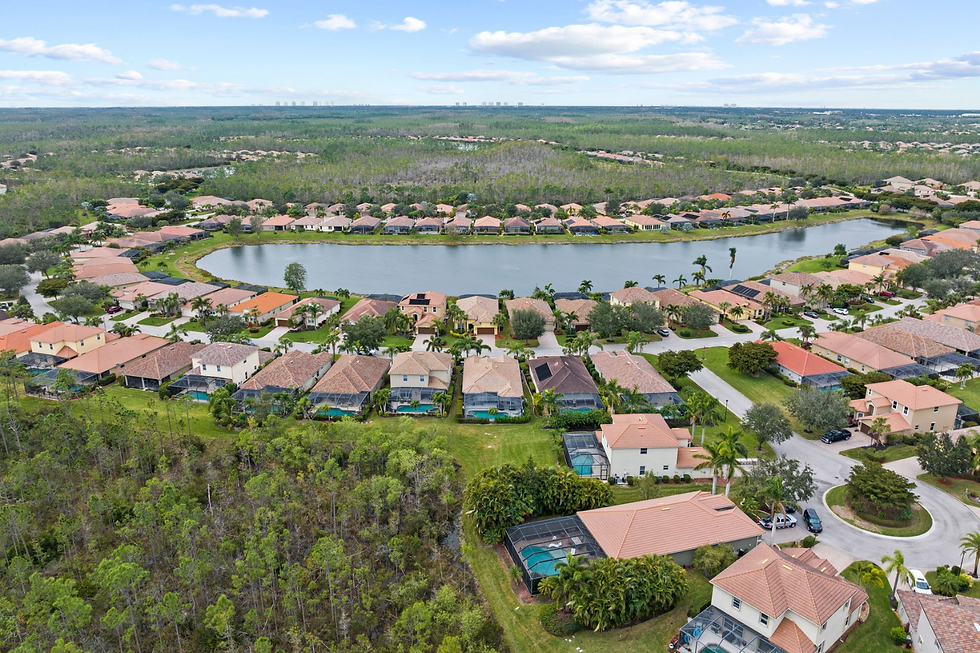The State of New Construction in the U.S. Housing Market: What Buyers and Sellers Need to Know in 2025
- realtorjakub
- Aug 1
- 6 min read

As we enter the second half of 2025, the U.S. housing market continues to grapple with a complex interplay of high interest rates, persistent affordability challenges, and a chronic shortage of homes. While the overall market remains sluggish—with existing-home sales dipping to a nine-month low in June at 3.93 million units annually, down 2.7% from May—the new construction segment offers a nuanced picture. New home sales edged up slightly in June to a seasonally adjusted annual rate of 627,000, a modest 0.6% increase from May's 623,000, though still 6.6% below June 2024 levels. This sector is marked by builders' efforts to stimulate demand through aggressive incentives, even as they slow production to manage rising inventory and compressed margins. For potential home buyers and sellers, understanding these dynamics is crucial for navigating what could be a transitional year toward greater balance, albeit with regional variations and ongoing headwinds.
In this post, we'll dive deep into the latest data, builder perspectives, market challenges, and opportunities, drawing on recent economic reports, earnings from major homebuilders, and expert insights. Whether you're eyeing a new build as a buyer or assessing competition from fresh inventory as a seller, here's what the state of new construction means for you.

Key Data on New Construction: A Slowdown in Single-Family Activity Amid Multifamily Resilience
The latest figures from the U.S. Census Bureau paint a picture of subdued activity in new residential construction, particularly for single-family homes, which dominate the market for individual buyers and sellers. In June 2025, total housing starts rose 4.6% month-over-month to a seasonally adjusted annual rate (SAAR) of 1,321,000 units but were down 0.5% year-over-year. This uptick was driven largely by multifamily projects (5+ units), which surged 30.6% month-over-month to 414,000 units and climbed 25.8% year-over-year. In contrast, single-family starts fell 4.6% from May to 883,000 units, marking a 10% decline from June 2024.
Building permits, a leading indicator of future activity, showed similar bifurcation. Total permits inched up 0.2% month-over-month to 1,397,000 but dropped 4.4% year-over-year. Single-family permits declined 3.7% from May to 866,000, down 8.4% annually, while multifamily permits rose 8.1% month-over-month to 478,000, up 2.1% from last year. Completions also reflected caution: Total completions plummeted 14.7% month-over-month to 1,314,000, a 24.1% year-over-year drop. Single-family completions fell 12.5% from May to 908,000 (down 15.5% annually), and multifamily completions dropped 21% month-over-month to 383,000 (down 39.8% year-over-year).
Inventory levels for new homes are rising, providing some relief for buyers. At the end of June, there were 511,000 new homes for sale, up 1.2% from May and 8.5% from June 2024, representing 9.8 months of supply at current sales rates—up from 9.7 months in May and 8.4 months a year ago. Overall active U.S. housing inventory (including existing homes) reached 1,102,787 listings in July 2025, the highest since July 2019 and a significant jump from the pandemic lows.
Prices for new homes are showing signs of moderation. The median sales price in June was $401,800, down 4.9% from May's $422,700 and 2.9% from June 2024's $414,000. This softening contrasts with existing-home prices, which hit a record $435,300 in June, up 2% year-over-year. Regionally, markets with high single-family permitting levels, such as parts of the South and West, are more likely to see inventory climb above pre-pandemic levels, leading to softer conditions.
These trends underscore a market where builders are pulling back on single-family projects to avoid oversupply, while multifamily construction provides a buffer. Overall, new construction in 2025 is on pace for about 1.48 million units authorized by permits, slightly above historical averages but insufficient to resolve the long-term shortage estimated at over 4.5 million homes.

Builder Perspectives: Resilience Amid Margin Pressure and Incentives
Major public homebuilders like D.R. Horton, Lennar, and PulteGroup reported solid Q2 2025 earnings, exceeding expectations and sparking sector rallies. However, underlying challenges are evident. PulteGroup's gross margin held at 27%, down from a pandemic high of 31.3%, as incentives averaged 8.7% of final sales prices—up from 6.3% in Q2 2024 and well above the "normal" 3-3.5% range. This includes up to $50,000 in buy-downs per sale, which builders prefer over direct price cuts because $1 spent on rate reductions generates more monthly payment savings in a high-rate environment.
Peter Jackson, CEO of Builders FirstSource (a $14 billion market cap supplier), noted in recent commentary that the situation is "a bit worse" than builders' rosier earnings portray, with builders slowing starts to manage inventory amid a challenging affordability landscape. Lance Lambert, a housing analyst, echoes this, highlighting how large builders are compressing margins to fund incentives like buydowns and buyouts, helping them avoid steeper pullbacks in production. Smaller builders, however, face tighter financing and are pulling back more aggressively, allowing big players to capture greater market share—now over 50% of single-family homebuilding, up from historical norms.
Labor availability has improved, with builders like Pulte Group and Taylor Morrison reporting plentiful trades, partly due to slowed multifamily projects and immigration enforcement not yet tightening supply as feared. Tariffs pose a risk, potentially raising costs, but so far, they've had minimal impact on horizontal (brick-and-stick) expenses, which have moderated.

Challenges: Affordability Crisis and Economic Uncertainty
The core issue remains affordability. With mortgage rates averaging around 6.7-7% in mid-2025, a household needs at least $140,228 in income to afford a median-priced home—putting it out of reach for 70% of households. First-time buyers, historically 40% of the market, made up just 30% of sales in June. High rates have frozen the market, with sales projected at around 4 million for the year—one of the lowest in decades.
Demographics add pressure: The U.S. faces its worst working-age population growth in history, with more homes potentially hitting the market from aging boomers than new household formations. Combined with record homes under construction (622,000 single-family units in June, down slightly but still elevated), this could lead to localized oversupply in softening markets like Texas, Florida, and parts of the South. Fed Chair Jerome Powell has emphasized the long-term shortage, noting it's beyond the Fed's control, even post-rate normalization.
Regulatory hurdles exacerbate the issue: Zoning and entitlements inflate costs by up to 25%, delaying projects and limiting supply. Builder sentiment is at a decade low, with cancellations steady but elevated (e.g., Pulte at 15%, far below crash-era 44%).

Opportunities: Incentives and Potential Rate Relief
For buyers, new construction shines with builder concessions. Rate buydowns, closing cost assistance, and upgrades make new homes more attractive than resales, where sellers are often reluctant to cut prices (over 20% of listings saw reductions in June, but many delist instead). In a high-rate world, these incentives can reduce effective monthly payments more efficiently than equivalent price drops. Markets like the Northeast and Midwest, with tighter supply, may offer stability, while the South and West could see more deals amid corrections.
Renting remains cheaper in most cities, but for those ready to buy, a projected drop in rates to 6.4% by year-end could unlock demand, adding 160,000 first-time buyers if rates hit 6%. Policy shifts, like easing regulations under a potential Trump administration, could spur construction longer-term.
Advice for Potential Home Buyers
Prioritize New Builds: Look for communities offering incentives—aim for builders like Pulte or D.R. Horton, where buydowns can shave points off your rate. With 9.8 months of supply, you have leverage to negotiate.
Assess Affordability Holistically: Factor in not just price but total costs. If rates fall later in 2025, refinancing could be an option.
Target Softening Markets: Areas with rising inventory (e.g., Texas, Florida) may yield better deals, but avoid overbuilt pockets to prevent value dips.
Prepare for Competition: Cash buyers are 29% of the market; get pre-approved and consider first-time buyer programs.
Advice for Home Sellers
Compete with New Construction: Price aggressively against nearby builds, which often include modern features and warranties. Highlight your home's established neighborhood or upgrades.
Time Your Listing: With inventory up 16% year-over-year, fall 2025 could see more buyers if rates ease. Avoid delisting—adjust prices instead, as homes linger 27 days on average.
Understand Local Dynamics: In high-construction areas, new homes could flood your market, pressuring prices. In supply-scarce regions like the Northeast, you hold more power.
Boost Appeal: Emphasize energy efficiency or low-maintenance aspects to rival new builds.

Outlook: Toward Balance, But Shortage Persists
The 2025 housing market is poised for gradual rebalancing, with inventory gains and modest price growth (2.5% nationally) offering buyer relief in select regions. However, the affordability crisis and undersupply—exacerbated by years of underbuilding—will linger, with sales likely flat until rates drop further. Large builders' discipline in pacing starts may prevent a glut, but smaller ones' retreat could slow overall output.
Fed rate cuts, potentially starting in late 2025, could spark a rebound, but demographics and economic uncertainty temper optimism. For now, new construction remains a bright spot for addressing the shortage, but it won't fully thaw the market without broader relief. Buyers and sellers should stay informed on local trends and consult professionals to capitalize on emerging opportunities.


